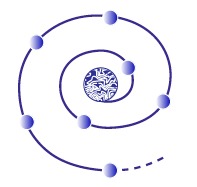 |
|
 |
MARI News Press Releases Blogs&Lists About Us Newsletter Disclaimers |
INTRODUCTIONSeveral groups in Hampton Roads, including but not limited to Wetlands Watch, the CCSLRI, and the Virginia Sea Grant (VASG) are discussing a process towards a community conversation about the future of Hampton Roads under a changing climate and with a rising sea level. This process may include one or more design competitions. The design process was discussed in a special session at the Annual meeting of VASG on January 23, 2014 in Richmond. In the session, Skip Stiles (Wetlands Watch) and Shelly-Ann Jules-Plag (Tiwah, Inc., see the presentation) introduced the Climate Adaptation and Resilience Design Competition to the participants. The interactive discussion, facilitated by Tanya Denckla Cobb of the University of Virginia Institute for Environmental Negotiation, focused on building a vision for this competition. Participants generated ideas for the hopes and needs for the design competition, judging criteria and target groups for first year involvement. Specifics such as focusing on historic building or affordable housing were mentioned, without a strongly favored focus emerging. The brainstorming session yielded both convergent and some divergent options for moving forward with a competition. There was a split about whether this competition should be purely visionary or practical, rural or urban focused, large or small in scale. The importance of including infrastructure, rather than just elevating houses was emphasized. Rural projects might engage more ecosystem-based management and adaptation and have an agriculture emphasis. Urban projects would be more focused on engineering or neighborhood development. With a grant from the Virginia Sea Grant Program, Wetlands Watch is enabled to plan the design work on sea level rise adaptation. Wetlands Watch is supported by MARI with the contact person being Michelle Covi (mcovi at odu.edu). The process envisioned is to assemble a multidisciplinary core team of design and engineering professionals and ecosystem experts. This team will review other design efforts in other regions (see list at end) to see what may be applicable to our work. Unlike many of the recent design efforts, driven by the recovery needs from Sandy and other extreme events, the team will seek to design adaptation approaches in anticipation of extreme weather and flooding. The process will be driven by the need to preserve or conserve ecosystem services and habitat in the eventual designs. In parallel, MARI is taking the lead in the development of a design process addressing the challenge of “living where it is safe and working where it is needed.” The goal of this process is to develop transformational ways of living with the rising waters without major degradations of the wellbeing of coastal communities and their economical activities. Focus of this process will be on the adaptive reorganization of the urban coasts in response to climate change and sea level rise with the goal to increase community resilience and reduce disaster risk. This process is motivated by the rapid development of scientific knowledge about the possibility of a rapid sea level rise. Recent publications concerning the irreversibel melting of the West Antarctic ice sheet, the discovery of deep submarine valleys under the Greenland ice sheet reaching far inland, and the reassessment of the role the Antarctice ice sheets played in the meltwater impulses during the last deglaciation require that we do not completely rule out a rapid sea level rise in this century much larger than the range indicated by IPCC or all other previous assessments. The extremely high risk associated with such a rapid rise poses a comprehensive design challenge throughout all aspects touched upon in Figure 3, which may require paradigm shift in how we live and work in the coastal zone.
DESIGN CHARETTESThe project led by Wetlands Watch envisions to have a series of place-based design charettes with teams of design/engineering professionals developing visualizations and options for adaptation in the chosen location. Rather than a “competition”, this will be more a collaboration with different points of view emerging at the end. The core team will rough out the design, focus, elements, and goals of the design process. That work will evolve into a “request for proposals” to go out to the local governments in Hampton Roads, asking cities and counties to “bid” for the design process to come to their locality. Each locality will pick an area, neighborhood, iconic structure that is being affected by tidal flooding events today and will be even more impacted in the future. The area cannot be so large or complicated as to tax the limits of the design teams. The ”bid“ process was chosen as a way to involve a broader set of localities in thinking about the use of adaptation design. In developing the proposal, each locality will be asked to commit resources to the process in the way of staff time/expertise, technical support (maps, impact information, long-range plans in place), and access and meeting space in the proposed area. In making these bids it is envisioned that higher levels of local government will have to review and be involved in the commitment of resources and in the process become aware of the design aspects of adaptation. It is hoped that this process will entice those localities not selected to see resources of their own to do design work or that we can find more funding in the future to conduct design work in other localities. It is hoped to involve many students and young professionals in this effort, as well as private sector firms. University departments that will like contribute include Hampton University's Architecture Department and Old Dominion University's Engineering Department. We are also engaged with the Hampton Roads Green Building Council and are seeking engagement with the Hampton Roads Urban Land Institute Chapter. The short-term goal of this work is to raise awareness of the design aspects of adaptation among the public and local governments. It is also a chance to test some engagement processes on adaption to see how well they work. The longer-term goal is to start developing expertise among the region's design and engineering community to address the region's adaptation challenges. With a focus on these solutions, a community of practice/expertise in adaptation design processes could develop that might become a profit center for the region. ROLE OF DESIGN COMPETITIONS IN A DESIGN PROCESSDesign competetions have been used widely to drwa on the creativity of communities and to engage relevant groups in the generation of new ideas to tackle a wide range of problems from better designs in general (e.g., the A'Design and Award), graphical design (Ca Communication Arts Competition, new art (new adaptations of theater plays), more sustainable and energy efficient buildings (like the U.S. Department of Energy's Solar decathlon or Challenge Home Student Design Competition), resilient housing (e.g Resilient Housing Design Competition 2013), to mitigation and adpatation to climate changes (e.g., the Climate Justice Poster Design Contest: Design for Adaptation in Developing Countries") and increased preparedness (e.g., Design for Future Climate: Adapting Buildings). Particularly in education, design competitions are often used to challenge and engage students (Building Science Education, 2014; for an overview of on-going student design competitions, see Design Competitions). Many of these competitions are design studies without the aim to actually implement the winning contributions. Design competitions that aim at the practitioner with the goal to contribute to solving specific societal problems are less frequent, and they often do not achieve the ultimate goal: In many cases these design competitions result in winning contributions that end up as nice posters without having a long-lasting impact and without contribution to problem solving. Only if the design process is integrated into the societal decision process and governance can we hope to change this and turn competitions into practice-relevant activities that contribute to problem solving. In a recent interview published in Wired (December 2013, page 106), Melinda Gates was asked “What innovation do you think is changing the most lives in the developing world?” She responded “Human-centered design. Meeting people where they are and really taking their needs and feedback into account. When you let people participate in the design process, you find that they often have ingenious ideas about what would really help them. And it's not a onetime thing: it's an iterative process.” This statement applies not only to the developing world. Also in the developed world, people's participation in the design process of innovation and knowledge is the best way of meeting the needs of the people. The design process developed for Hampton Roads will have a strong focus on community participation. Importantly, any mitigation and adaptation measure with a long-term perspective toward increased preparedness for climate change and the surprises this will bring for us will have to include not only the built environment but also the natural resources and, most importantly, the social fabric and the social capital. In many cases, changed behavior is the key to successful adaptation, which may also necessitate a revisiting of our value system and what we take at any point in time as immutable truths. The design process will have to face these challenges in order to progress our learning to live with a new planet. Traditional competitions focusing mainly on the built environment and some natural resources cannot not inform adaptation to living on Eaarth (as Bill McKibben likes to call our re-engineered planet). Design issues need to be considered much broader. An example is the recent article by Joe S. Whitworth in Huffington Post (read the article), where he concludes that in response to climate change, we need to change design, not minds. Many of the traditional approaches to climate change mitigation and adaptation (e.g., Ekstrom et al., 2011) are generic (e.g., Figure 2 in Ekstrom et al., 2011) and do not successfully address means to ensure broad participation. They also often neglect the nexus between general sustainability and climate change adaptation. Often, adaptation has the goal to somehow better manage a system, neglecting that the social fabric (including the managers) is part of the coupled human-natural system. The desired outcomes are often not explicitly addressed and the goal of adaptation remains obscure. Implicit to this approach is that decisions are being made by the managers/governance stakeholders for the people, not with the people. We prefer a framework that is outcome oriented, participatory, and deliberative (and inherently democratic). Such a framework has been proposed by Glavovic (2013b). The starting point in this frameworks is a societal discourse of the desired outcomes. Below, we discuss this framework in more detail. A particular challenge for the more historic parts in Hampton Roads is how to carry the valued past into a future on a planet that is different from the past, when the historic built environment developed. We need a design for a safe and thriving live in the coastal zone of a warmer planet with higher sea levels. DESIGNING A SUSTAINABLE FUTURE UNDER CLIMATE CHANGEMitigation of climate change impacts or adaptation to those impacts are challenging governance at a range of levels, and they require novel approaches to decision making on societal level. While we are facing an innovation paradox (Glavovic, 2013a), in which subsequent innovations have brought us further away from sustainability, we also are under an innovation imperative (Glavovic, 2013b) because only more, and well-designed innovations can bring us closer to sustainability. The process that can utilize and inform the innovation imperative is a deliberative governance with participation of all societal stakeholders. The coastal zone is the frontline in humanity's sustainability crisis (Glavovic, 2013a), and this crisis is amplified by climate change and sea level rise. Many parts of the coastal zone, particularly the urban coasts are in urgent need for designs of the built environment, the natural resources and the social capital that can support a sustainable coast under rapidly changing environmental conditions. Achieving a sustainable coast requires participation and buy-in of all stakeholders. The process therefore inherently has to ensure broad participation. With this in mind, Glavovic (2013b) proposes a framework for deliberative governance, which we will apply here. This framework has four distinct phases (Figure 1):
These phases are inherently linked to coastal outcomes and process outcomes (Figure 2). It is important that outcomes are agreed upon in deliberations bringing together all stakeholders. The design process described in the right column takes this framework of deliberative governance into account and reflects processes and outcomes that can be linked to the four phases of the Glavovic framework. |
DESIGN PROCESS IN SUPPORT OF ADAPTATION AND MITIGATIONIn a generalized concept, a design process is an integral part of the societal development of the built environmental as well as the social capital. It is inherently linked to the decision making and crucial for the desired outcomes (Figure 3). 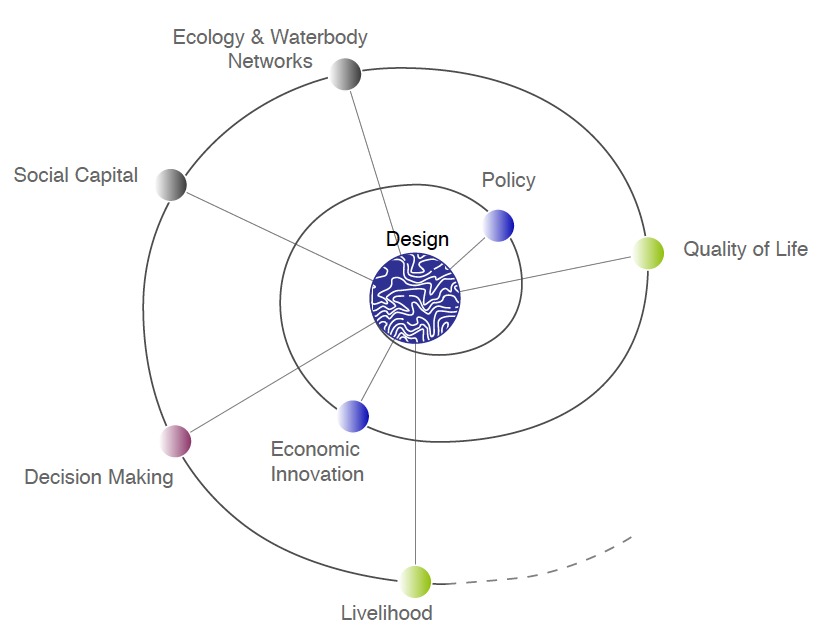 Figure 3: The design spiral emphasizes the impacts that a design process with broad participation in the community can have on policies, economic innovations, quality of life, integration of ecology into the planning of land use and the built environment, increase in social capital and improved decision-making, and, ultimately, the livelihood of a community. Livelihood and Quality of Life are the desired outcomes. Decision-making is the process that can generate these outcomes. Social Capital and Ecology are the resources, while Policy and Economic Innovation are tools. The Design is the underlying basis, and the design process is crucial in making use of the tools to safeguard and improve the resources, and ultimately to facilitate the outcomes. Figure from Jules-Plag (2014, personnel communication). CLIMATE CHANGE AND CULTURAL HERITAGEA particular challenge in the context of climate change adaptation are the buildings and cultural elements that are part of our cultural heritage. In most cases, these are unique, and loosing them would be irreversable. In this case, besides protecting and adapting, we also need to consider the option of recreating them in other locations by either moving the elements out of hazardous zones or by rebuilding them in safe areas. 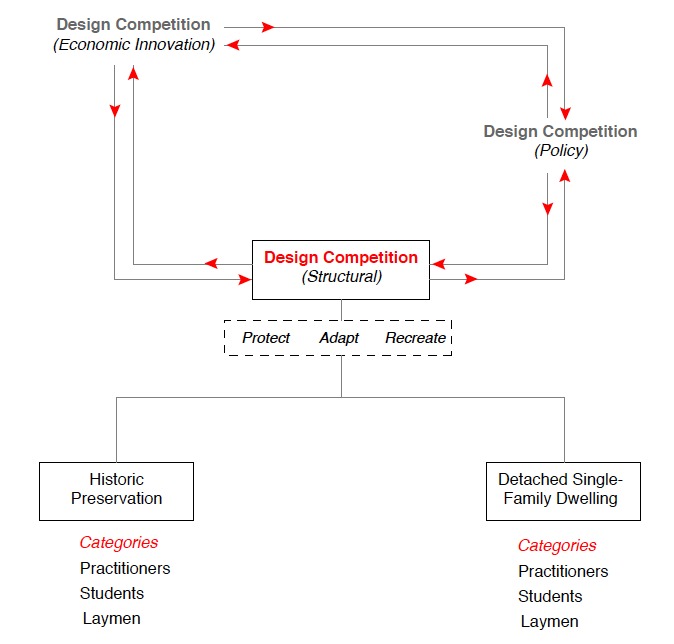 Figure 4: A specific design competition may focus on adaptation of detached single-family dwellings that are protected as part of the historical heritage in the region. This competition would have to address the alternatives of protecting these buildings against flooding hazards, adapting them to flooding, or moving and recreating them in a different location. To accommodate these alternatives, the competion would have to address structural changes, policy changes, and economic innovations needed to facilitate the protection, adaptation, and recreation. Figure from Jules-Plag (2014, personnel communication). LINKS TO OTHER RELEVANT DESIGN ACTIVITIES
REFERENCESEkstrom, J. A., Moser, S. C., and Torn, M., 2011. Barriers to Climate Change Adaptation: A Diagnostic Framework. California Energy Commission. Publication Number: CEC-500-2011-004. Glavovic, B. C., 2013a. Coastal Innovation Paradox. Sustainability, 5, 912-933; doi:10.3390/su5030912. Glavovic, B. C., 2013b. Coastal Innovation Imperative. Sustainability, 5, 934-954; doi:10.3390/su5030934. |
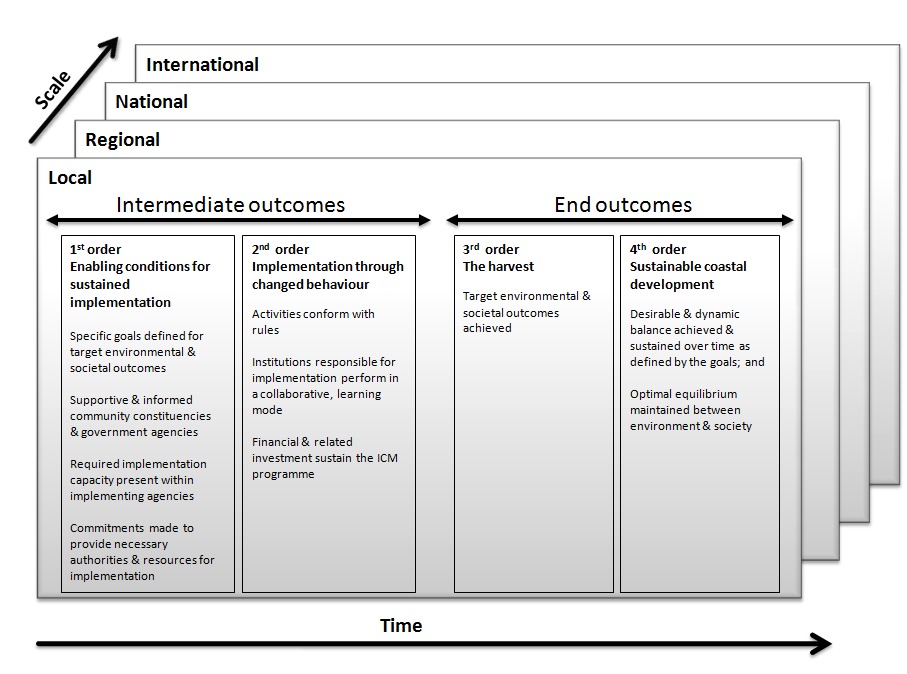
Figure 1: Orders of coastal governance outcomes. From Glavovic (2013b).
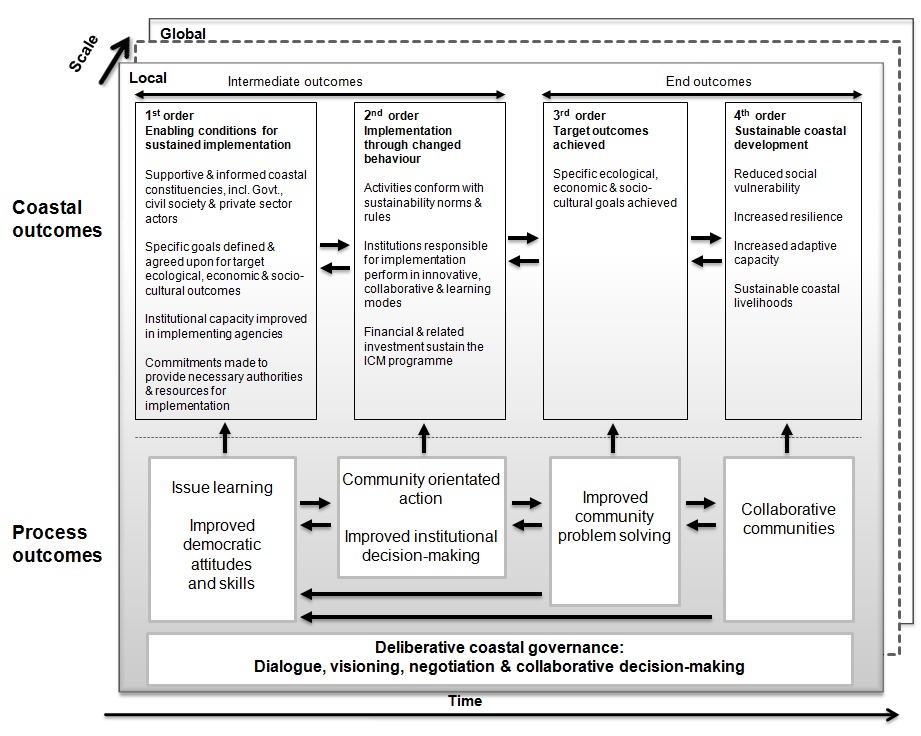
Figure 2. Deliberative coastal governance. From Glavovic (2013b).
